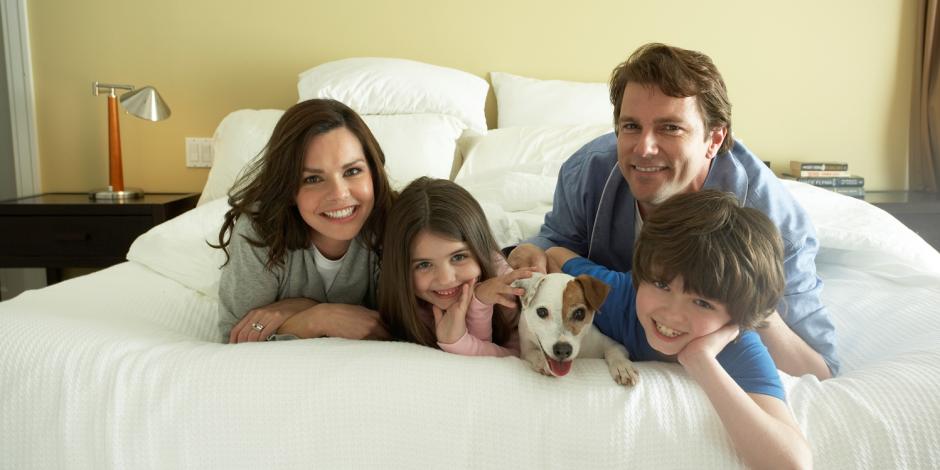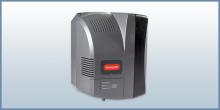
Is your house never quite comfortable enough? Maybe you have a hot second floor or a cold room above the garage. Or maybe you’re dealing with dry air in the winter and a hot, humid house in the summer.
It doesn’t have to be this way! You deserve a comfortable house, and CARJON can help you get it.
We are a local HVAC company in Rhode Island that specializes in home comfort solutions. Our team solves heating and air conditioning problems, indoor air quality issues, humidity concerns, and much more so you can live in a world of total comfort. We take a whole-home approach, looking at everything from your heating and AC system to your air ducts, ventilation systems, and more so we can deliver cutting-edge total comfort for your home!
The Key to a Comfortable Household
Home comfort is much more than just the temperature on your thermostat. There are three key areas we consider when making home comfort improvements.
1. Health & Safety
The health and safety of you and your family in your home is our #1 priority. Each year dozens of people fall victim to fatal carbon monoxide (CO) poisoning. Many more develop respiratory problems, such as asthma, lung diseases, or worse from breathing in dust, mold spores, and other harmful materials. We uncover and prevent problems like these from happening in your home with indoor air quality testing and solutions, proper HVAC system installation, and ventilation services.
2. Increased Comfort
Of course, your physical comfort is key. Several factors contribute to comfort in your home, including temperature, humidity levels, and air quality. That’s why we consider your entire home, not just your HVAC system, when making comfort improvements. Our goal is to diagnose the real issues causing your discomfort and solve them at the source.
3. Energy Efficiency
Energy efficiency and comfort go hand in hand. The more energy efficient your heating and cooling systems are, the better they’ll perform. Plus, energy efficient HVAC systems heat and cool your home using less energy, so you can save money on your utility bills. We install high-efficiency heating and cooling equipment and we also offer HVAC maintenance services to keep your heating and cooling systems running at peak efficiency.
Complete Home Comfort Services in Rhode Island
We offer a wide range of home comfort solutions that go beyond heating and cooling to provide the ultimate combination of health, safety, comfort, and energy efficiency for your home.
Home Zoning & Smart Thermostats
Smart thermostats make it easier than ever to keep your home at a comfortable temperature. They learn your habits and automatically adjust to the optimal comfort and energy efficiency settings. With a smart thermostat and home zoning system, your house will be more comfortable than ever before.
Indoor Air Quality
Poor indoor air quality has been proven to cause and/or worsen many health problems! Keep your home’s breathing air clean and healthy with our indoor air quality solutions.
Air Purifiers
We install whole-home air purification systems that remove contaminants from your indoor air as it moves through your HVAC system. With a whole-home air purifier, you can rest easy knowing that mold spores, dust, pollen, and other allergens are being scrubbed from the air your family breathes.
Ductwork, Filtration & Ventilation
Poor ventilation and filtration problems are often the root cause of indoor air quality and comfort issues. We solve them at the source so you can enjoy long-lasting home comfort and health.
Humidity Control
Humidity control is essential to maintaining a comfortable household. Too much humidity leads to moisture and mold growth while too little causes dry air and respiratory problems. We offer whole-home humidity control systems to strike the perfect balance.
Live in a World of Total Comfort with CARJON
Get better heating and cooling, healthier indoor air quality, and a more comfortable home with CARJON! We’re highly experienced, locally owned, and here to help with all of your home comfort needs. From older homes to new builds and everything in between, we do it all and are the HVAC company Rhode Island homeowners have trusted since 1989.
Want a more comfortable home? Call 401-232-9400 to schedule a free consultation!
Got comfort problems?
Solve them with CARJON!
401-232-9400
"I deal with many contractors and usually they disappoint me more often than not. I can't say that about CARJON. I'd recommend you to anyone... I'd hire you in a minute for all my heating and A/C service and installation needs. Thanks again for a job well done."








